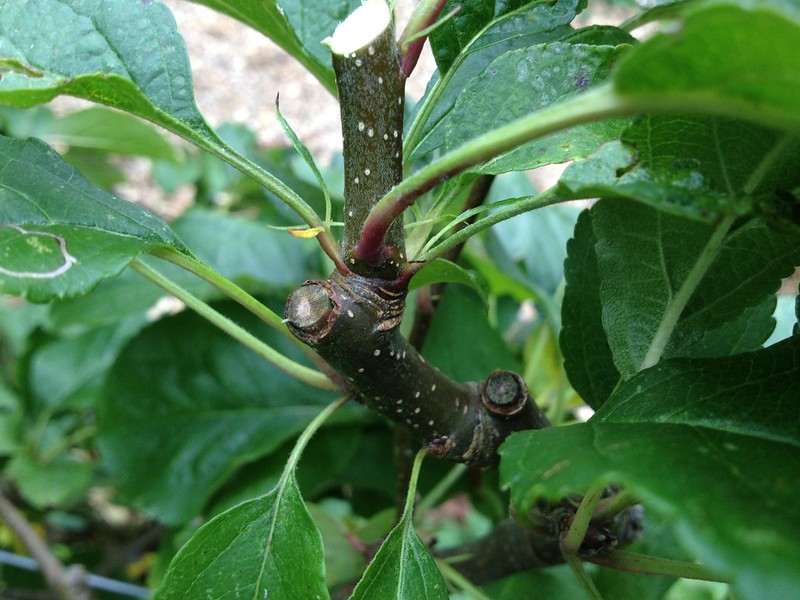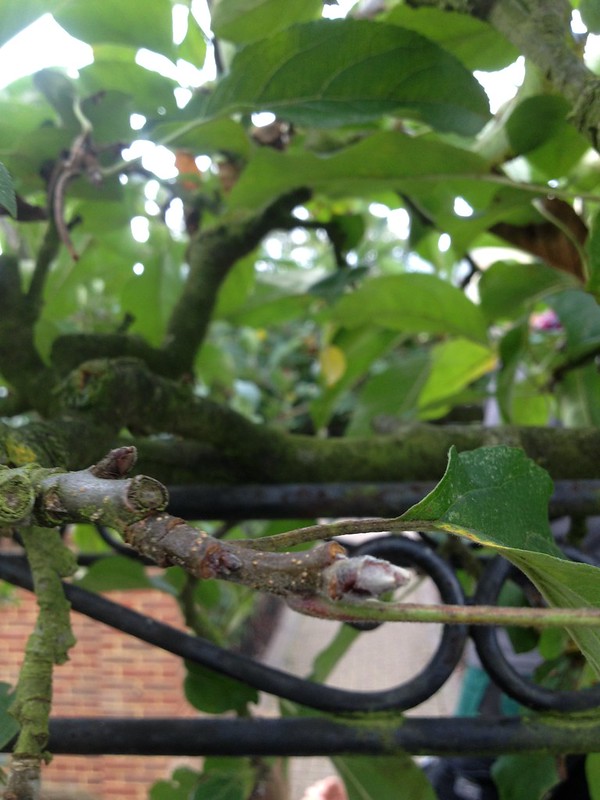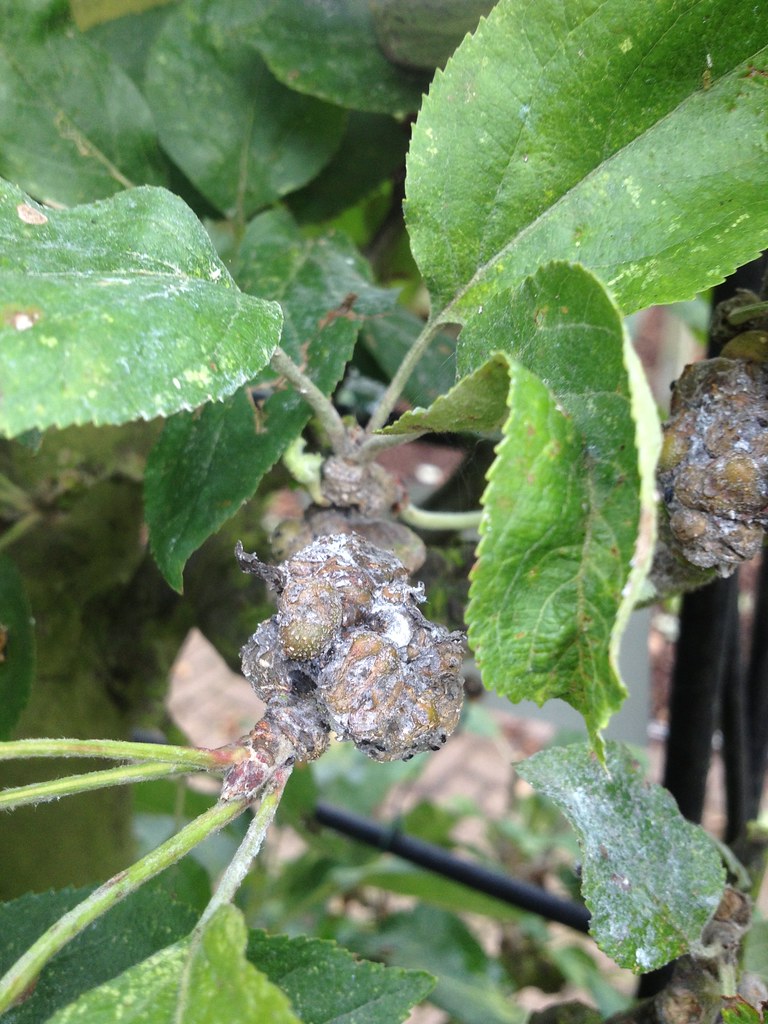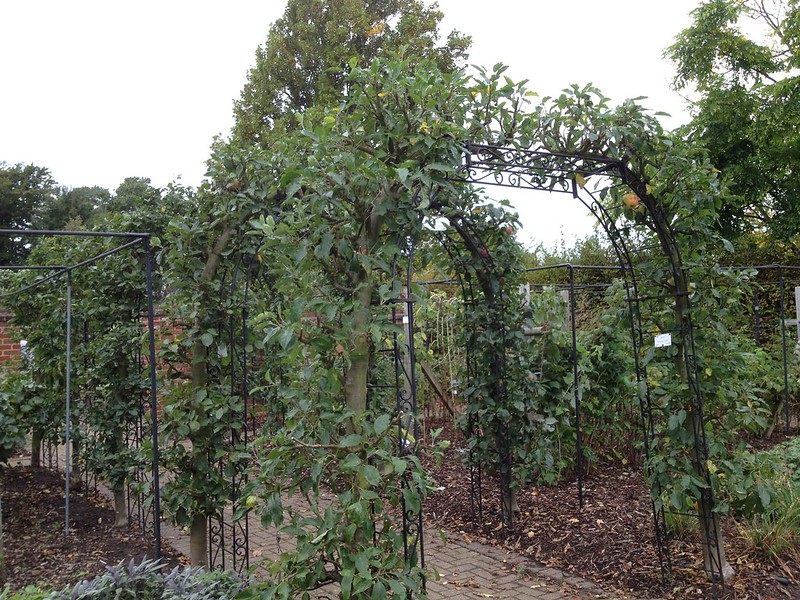But as it's now October, and the new shoots have stiffened at their tips (previously sappy growth), it was finally time to prune them back. We worked on apples trained on arches, oblique cordon apple and pears and some stepover apples.
We applied the following criteria:
- looking for new growth that was longer than secateur lenght (as stems that are shorter usually bear fruiting buds so must be kept), we traced it back to the bud scale scars, which usually have a cluster of leaves just above them, named the basal cluster
 |
| Bud scale scar with basal cluster |
- laterals (not very many of these present, but they could be described as new growth from a dormant bud on the main stem) were cut back to 3 leaves above the basal cluster, to give them a chance to put up secondary growth, making them more robust
- sub-laterals (or fruiting spurs) were cut back to 1 leaf above the basal cluster, to keep the tree compact and tidy (some pears had rather thin sub-laterals, which we treated like laterals to encourage thickening).
Training restricted forms of apples and pears like this helps:
- to encourage fruit buds (in the picture below, you can see a short spur with a tip bud developed where the new growth was cut to one leaf above the basal cluster, together with a fruit bud lower down)
 |
| Fruit buds from previous pruning |
- to let the sun in to ripen the fruits (particularly if, unlike this year, leafy growth stops before the fruits are ripe)
- to have decorative and compact, as well as productive fruit trees.
While summer pruning restricts growth, winter pruning encourages it: some of these tree will need some over winter, to bring back laterals that have grown too unwieldy and encourage new growth to keep plants productive and to remove damaged stems (like the ones in the picture below, damaged by stem sap-suckers woolly aphid, Eriosoma lanigerum - incidentally, earwigs, Forficula auricularia, are natural predators of the aphids and encouraged in the orchard).
 |
| Knobbly stem, woolly aphids' damage |

No comments:
Post a Comment